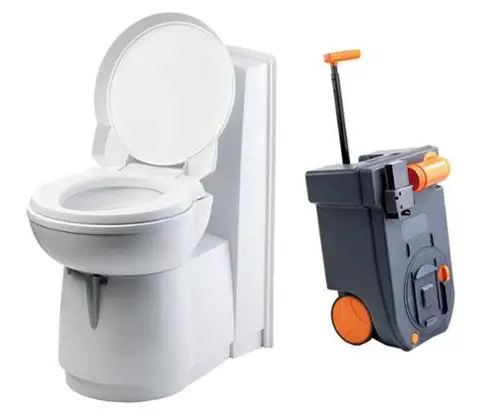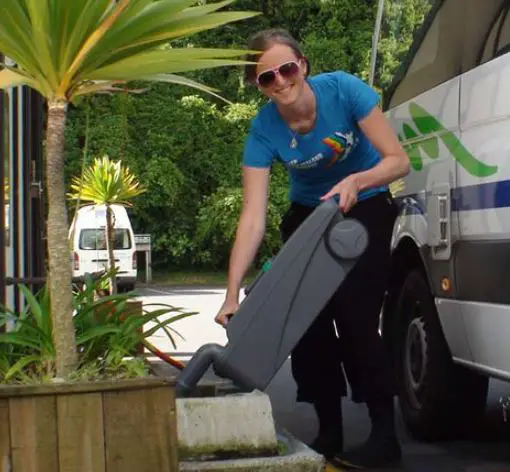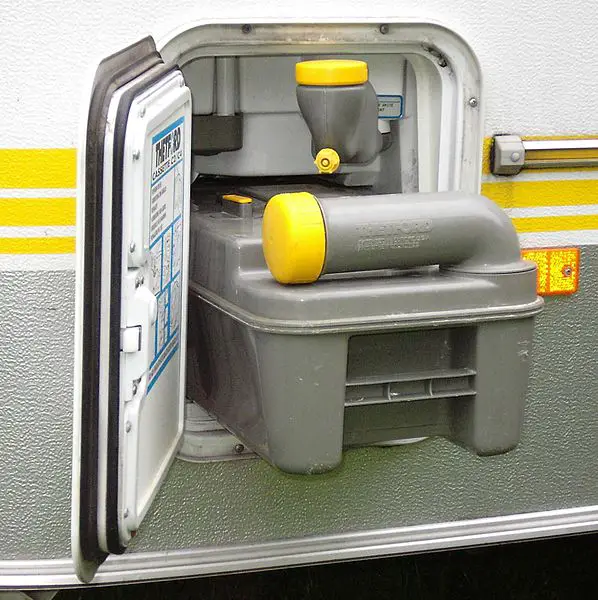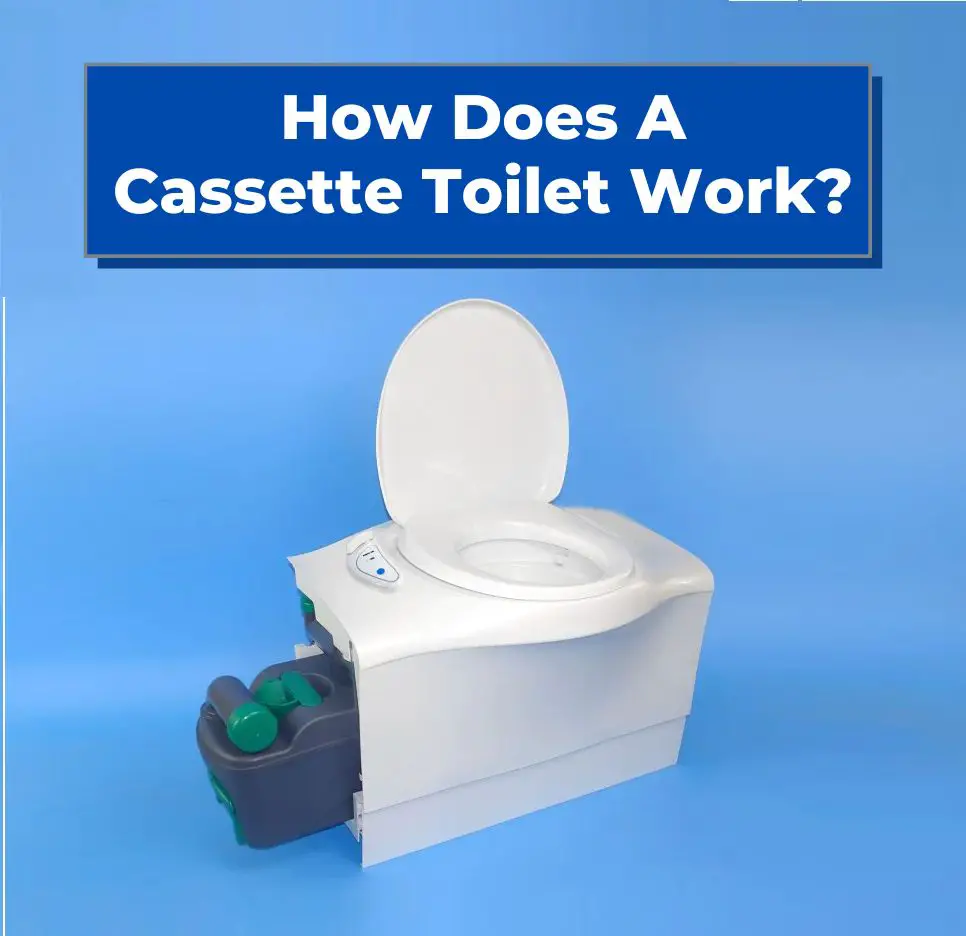Cassette toilets are a popular choice among RVers and campers because of their convenience and portability. A cassette toilet is a self-contained toilet system that uses a removable waste tank, or cassette, to hold the waste until it can be emptied. These types of toilets are commonly found in small RVs, campervans, and boats, where space is limited. But how does a cassette toilet work?
The cassette toilet system is fairly simple to use. The toilet bowl is similar to a regular toilet, but instead of flushing the waste down a drain, it drops into a removable waste tank located beneath the toilet. The waste tank is designed to be easily removed and emptied at a designated dumping station. The toilet is then ready to be used again.
While cassette toilets may not be as common as traditional toilets, they offer a number of benefits, such as their compact size and ease of use. Understanding how a cassette toilet works is important for anyone who plans to use one, whether on a camping trip or in an RV. In the following sections, we will explore the components of a cassette toilet system and how they work together to provide a convenient toilet solution for travelers.
What Is A Cassette Toilet?

A cassette toilet is a type of RV toilet that is permanently installed in the vehicle. It is similar to a portable camping toilet, but instead of being completely removable, it has a detachable holding tank that can be easily removed and emptied. The holding tank is typically located close to the wall of the RV, and it can be accessed through an exterior door.
The toilet itself looks and functions much like a traditional toilet. You open the toilet valve door, do your business, flush, and then close the valve. The main difference is that instead of flushing the waste into a black water tank, it goes into the cassette holding tank.
The cassette holding tank is designed to be portable, so when it’s full, you can easily remove it from the RV and take it to a dumping station to empty it. This makes it a convenient option for RVers who don’t want to deal with the hassle of a traditional black water tank.
How Does A Cassette Toilet Work?
A cassette toilet is a portable toilet system that is commonly used in recreational vehicles (RVs) and boats. It consists of three main components: the toilet, the holding tank, and the water source. Understanding how each of these components works is essential to using and maintaining the cassette toilet system.
Flushing Process
The flushing process of a cassette toilet is similar to that of a regular toilet. When the user is ready to flush, they press a button or lever that releases water from the water source into the toilet bowl. This water helps to move the waste into the holding tank. Once the waste has been flushed, the user can close the valve and the toilet is ready for the next use.
Waste Collection and Disposal
The waste collection process of a cassette toilet is where it differs from a regular toilet. Instead of flushing the waste into a sewer system, the waste is collected in a removable holding tank. When the holding tank is full, it needs to be emptied. To do this, the user removes the tank from the toilet and takes it to a designated waste disposal area. The waste can then be emptied into a restroom or dump station using the dump hole.
Cleaning and Maintenance
Proper cleaning and maintenance of a cassette toilet is essential to ensuring its longevity and functionality. To clean the toilet, the user should use a mild cleaner and a soft cloth. The holding tank should be emptied regularly and cleaned with a specialized cleaner. It is also important to regularly check the seals and valves to ensure that they are functioning properly.
Overall, understanding how a cassette toilet works is important for anyone who is using or considering using an RV or boat with this type of toilet system. By following proper cleaning and maintenance procedures, users can ensure that their cassette toilet system will function properly for years to come.
Components of a Cassette Toilet
Toilet Bowl
The toilet bowl of a cassette toilet looks and functions similarly to a traditional toilet. It has a seat, lid, and flushing mechanism. The difference is that the bowl is connected to a removable waste holding tank, which is located beneath the bowl. When the toilet is flushed, the waste is directed into the holding tank.
Flush Mechanism
The flush mechanism of a cassette toilet can vary depending on the model. Some models have a hand pump that pumps water into the bowl, while others have an electric pump that does the same job. The water used for flushing is stored in a separate tank and is typically refilled manually.
Waste Holding Tank
The waste holding tank is the most important component of a cassette toilet. It is where all the waste is stored until it can be emptied. Cassette tanks sizing varies depending on the model of the cassette toilet. When the holding tank is full, it must be emptied at a designated dump station.
The holding tank size will vary, and can make a big impact on how often you need to empty it!
Ventilation System
A cassette toilet also has a ventilation system that helps to control odors. The ventilation system consists of a small fan that draws air from the toilet bowl and pushes it through a carbon filter. This helps to remove any unpleasant odors and keep the air in the RV fresh. Overall, the components of a cassette toilet work together to provide a convenient and efficient way to dispose of waste while on the road. By understanding how each component works, RVers can ensure that their cassette toilet is functioning properly and avoid any unpleasant surprises.
Advantages and Disadvantages of Cassette Toilets

Advantages
Cassette toilets have become popular in the RV and camping world because of the many advantages they offer. Here are some of the benefits of using a cassette toilet:
- Portability: One of the biggest advantages of a cassette toilet is its portability. You can easily remove the waste tank and take it to a dump station when it’s full. This feature is especially useful for those who enjoy camping off the grid and don’t have access to a dump station.
- Size: Cassette toilets are smaller than traditional RV toilets, making them a popular choice for small RVs and camper vans that have limited space.
- Ease of use: Cassette toilets are easy to use and maintain. They have few moving parts, and the parts are easily accessible for cleaning or replacement.
- Cost-effective: Cassette toilets are typically less expensive than traditional RV toilets.
Disadvantages
While cassette toilets offer many benefits, they also have some drawbacks. Here are some of the disadvantages of using a cassette toilet:
- Frequent dumping: The waste tank of a cassette toilet is smaller than that of a traditional RV toilet, which means it needs to be emptied more often. This can be inconvenient, especially if you’re camping in a remote area with limited access to dump stations.
- Odor: Because the waste tank is located inside the RV, there is a risk of odor if it’s not emptied frequently or if the seals are not properly maintained.
- Capacity: The waste tank of a cassette toilet is smaller than that of a traditional RV toilet, which means it can only hold a limited amount of waste. This can be a problem if you have a large family or if you’re camping for an extended period of time.
How Often Do You Have To Empty A Cassette Toilet?
A cassette toilet is a portable toilet that is commonly used in RVs, campers, and boats. One of the main advantages of a cassette toilet is that it is a self-contained unit, which means that it does not require a connection to a septic tank or sewer system. However, this also means that you will need to empty the waste tank on a regular basis.
The frequency with which you need to empty a cassette toilet will depend on a few factors, such as the size of the tank, the number of people using the toilet, and how often the toilet is being used. As a general rule, it is recommended that you empty the waste tank every 2-3 days if it is being used by one person. If there are multiple people using the toilet, you may need to empty it more frequently.
It is important to note that if you do not empty a cassette toilet frequently enough, waste can build up and cause problems. Not only can this lead to unpleasant odors, but it can also cause blockages in the system, which can be difficult and expensive to fix.
When it comes time to empty the waste tank, you will need to find a dump station or bathroom that is equipped to handle the waste. Most RV parks and campgrounds have dump stations on site, but you can also find dump stations at rest areas, truck stops, and other locations. It is important to follow proper procedures when emptying the waste tank to avoid spills and other issues.
In summary, the frequency with which you need to empty a cassette toilet will depend on a variety of factors, but it is generally recommended that you empty the waste tank every 2-3 days if it is being used by one person. By following proper procedures and emptying the waste tank regularly, you can ensure that your cassette toilet remains clean and functional for years to come.
Can You Poop in a Cassette Toilet?
A cassette toilet is a popular choice for many RV owners due to its convenience and portability. However, one common question that arises is whether or not you can poop in a cassette toilet. The answer is yes, you can, but there are some things to keep in mind.
Firstly, it is important to note that a cassette toilet is not designed for heavy use. It is meant to be used for short periods of time, such as during a road trip or camping trip. Therefore, it is recommended to avoid using it for extended periods of time or for heavy use.
Secondly, it is important to properly maintain the cassette toilet. This includes making sure you pour some water into the tank, regularly emptying the waste holding tank, and cleaning the toilet bowl. Adding poop to the cassette toilet can make it smelly and harder to empty. Additionally, toilet paper can make it even harder to empty, so it is recommended to discard used toilet paper in a separate trash can.
Overall, while it is possible to poop in a cassette toilet, it is important to use it responsibly and maintain it properly in order to avoid any unpleasant experiences.
Where Can You Dump A Cassette Toilet?

When it comes to using a cassette toilet, one of the most important things to consider is where you can dump it. Fortunately, there are many options available, including:
- RV parks and campgrounds: Most RV parks and campgrounds have dump stations where you can empty your cassette toilet. Look for signs that say “dump station” or “sanitary dump.”
- Rest areas: Some rest areas have dump stations that you can use for free.
- Gas stations: Some gas stations have dump stations that you can use for a fee.
- Campground bathrooms: Some campgrounds have bathrooms with dump stations that you can use.
It’s important to note that not all dump stations are created equal. Some may be cleaner and more well-maintained than others, so it’s a good idea to do some research and read reviews before choosing a dump station to use.
Additionally, it’s important to follow proper dumping procedures to avoid any mess or unpleasant odors. Always wear gloves and follow the manufacturer’s instructions for emptying your cassette toilet. Make sure the valve blade handle is in the closed position and the toilet bowl is empty before removing the holding tank. Once you’ve emptied the tank, rinse it out with clean water before replacing it.
Is A Cassette Toilet Worth It? Yes, Here’s Why
A cassette toilet is a type of toilet that is commonly used in RVs, boats, and other small living spaces. It is a self-contained unit that has a removable waste tank that can be easily emptied and cleaned. While some people may be hesitant to use a cassette toilet, there are several reasons why it is worth considering.
- Easy to use: Cassette toilets are easy to use and require minimal maintenance. They are designed to be user-friendly, and most models come with clear instructions on how to operate them.
- Convenient: A cassette toilet is a convenient option for those who want to have a toilet in their RV or boat. It eliminates the need to use public restrooms or to find a place to dispose of waste.
- Cost-effective: Cassette toilets are generally more affordable than other types of toilets. They are also cheaper to install and maintain, making them a cost-effective option for those on a budget.
- Environmentally friendly: Cassette toilets are an environmentally friendly option as they use less water than traditional toilets. This makes them ideal for those who want to conserve water and reduce their carbon footprint.
Overall, a cassette toilet is a worthwhile investment for those who want a convenient, cost-effective, and environmentally friendly toilet option. While it may not be for everyone, it is definitely worth considering for those who are looking for a practical and easy-to-use toilet solution in their RV or boat.
Check out our other helpful RV repair and troubleshooting guides while you’re here:
Can You Dump Grey Water On The Ground?

